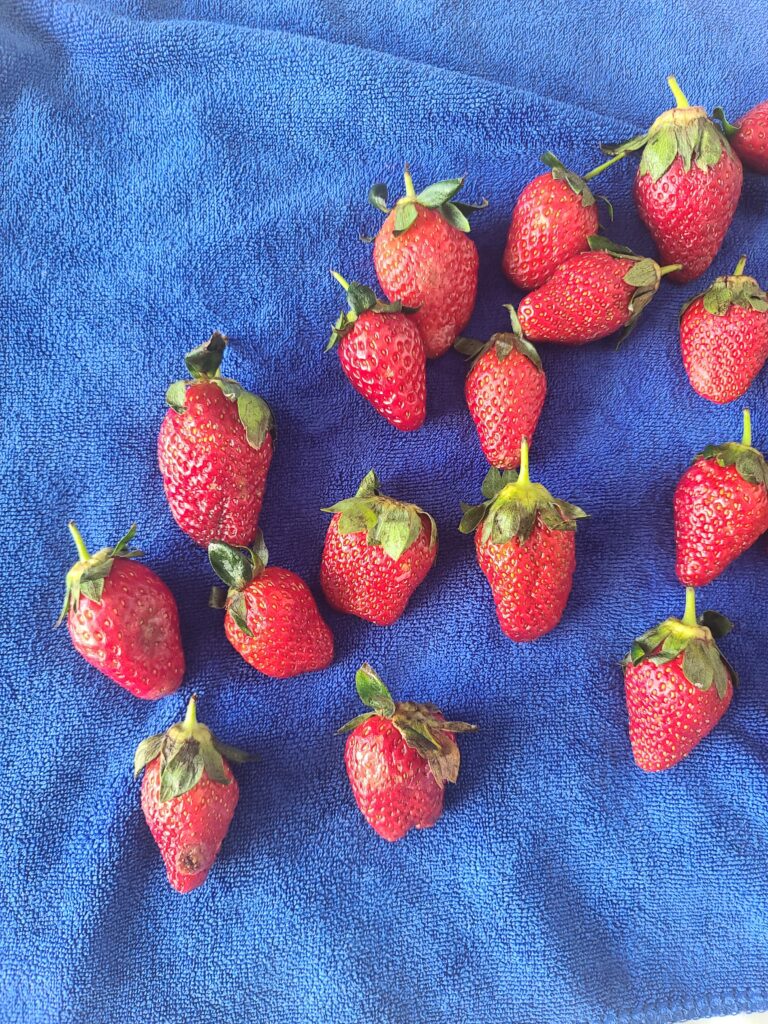I have been traveling Vietnam the past 3 weeks visiting farms and open air markets primarily from Central Vietnam south to Ho Chi Min City, formally known as Saigon. Last year I was able to travel from Central Vietnam north to Hanoi so this season completes nearly the full length of the country. One of the real surprises I found recently in the open air markets were Vietnamese strawberries! I am used to imported strawberries but these were grown in the north and it was a delight to see them. Of course I had to inquire further and learn what I could.
In Vietnam, strawberries are primarily grown in the city of Da Lat in the Central Highlands province of Lam Dong, which is considered the main producer of strawberries due to its temperate climate ideal for strawberry cultivation; the French introduced strawberries to Da Lat in the early 20th century making it the oldest location in Vietnam to grow them. The main strawberry crop in Da Lat typically starts during the dry season from November to April, so I was here right in the main season. What were my impressions of the Vietnamese strawberries after tasting a few different shipments and seeing them in a number of open air as well as in store markets… In general, Vietnam food handling and transportation is still developing. The wide spread lack of potable water is a huge difficulty throughout any system. The gaps in refrigeration and the slower transportation routes all add up to difficulties to providing the quality of the finished product that you see in Japan for example, a subject of an earlier blog by our food writer Miki Honda. You can see from the photo below that within nearly every container there were damaged or slightly rotten berries which can hasten the degradation of the entire container.
Strawberries are however a particularly fragile and difficult fruit to bring to a market some distance away from the fields. To deliver a near perfect strawberry to retail markets requires great care in picking, handling, keeping the fruits cool starting immediately after harvest all the way through to the retail shelf. This is not yet possible throughout Vietnam.
However! The berries that were in good shape were very flavorful. They were mostly mid sized strawberries but they had a nice color and taste. And quite frankly the pride of the berries coming from Vietnam was evident by the sellers and the consumers, which is never to be dismissed. I was so happy to have had the opportunity to try them and to see the pride of Vietnam in those berries.
What is the future of the Vietnam strawberry? Well, it seems evident that with the increasing availability of more modern post harvest handling, and transportation throughout Vietnam the future looks promising! Vietnam has a program called VietGap (Good Agricultural Practices) which is working hard to bring updated processes to any of the agricultural products of Vietnam, strawberries included. So, improvements are happening as we speak. I think there might be a market for USDA NOP certifications for Vietnam strawberries, however due to the cost and complexity of the USDA NOP or other global organic programs, perhaps a more regional alternative agricultural certification might be more appropriate at this time.
So in conclusion, it was so interesting to see and taste the Vietnamese strawberry, clearly a product the country is proud of. And after visiting this country now for a combined total of four months, I would not ever bet against this advancing, educated improving country. I look forward to watching the bottle necks being resolved and the quality of the Vietnamese strawberry continuing to improve for the retail consumer over the next few years. In the meantime I am going to enjoy them as they are: flavorful, colorful, and one of the many prides of Vietnam!

Unfortunately nearly every container had a few strawberries that were past their prime. Improved post harvest handling from field to consumer will reduce this damage in the near future.